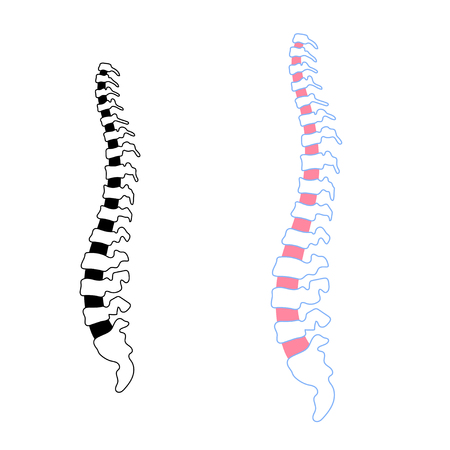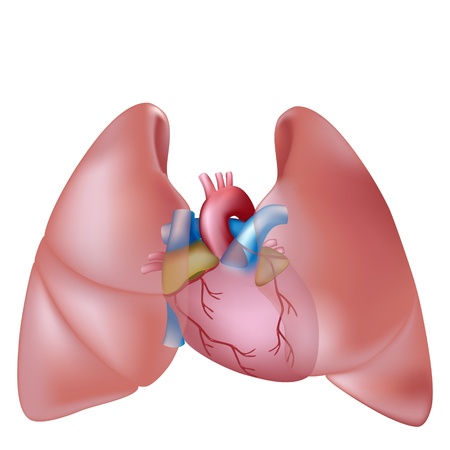Introduction to Voice Disorders in Adults
Voice disorders are conditions that affect the way a person’s voice sounds or how they use their voice. These disorders can cause changes in pitch, loudness, or quality of the voice. In adults, voice disorders may make it difficult to speak clearly, comfortably, or for long periods. Understanding voice disorders is important because our voices play a big role in how we communicate and connect with others in daily life.
What Are Voice Disorders?
A voice disorder happens when there is a problem with the vocal cords or other parts of the voice box (larynx). This problem can make the voice sound hoarse, weak, strained, or even cause a complete loss of voice. Some common types of voice disorders include:
| Type of Voice Disorder | Description |
|---|---|
| Laryngitis | Inflammation of the vocal cords, often from infection or overuse |
| Vocal Cord Nodules/Polyps | Small growths on the vocal cords from strain or injury |
| Muscle Tension Dysphonia | Tightness or tension in the muscles around the larynx |
| Paralysis/Paresis of Vocal Cords | Weakness or inability to move one or both vocal cords |
How Common Are Voice Disorders in Adults?
Voice disorders are more common than many people think. Research suggests that about 1 in 13 adults in the United States have experienced a voice problem in the past year. People who use their voices a lot at work, such as teachers, singers, salespeople, and customer service representatives, are at higher risk.
Prevalence of Voice Disorders Among U.S. Adults
| Group | Estimated Percentage Affected |
|---|---|
| General adult population | 7-10% |
| Teachers and professional voice users | Up to 20% |
| Seniors (age 65+) | Over 20% |
The Impact on Communication and Quality of Life
A healthy voice is essential for expressing ourselves at work, with friends and family, and during social activities. When an adult develops a voice disorder, it can lead to:
- Difficulties being understood by others
- Embarrassment or frustration when speaking in public or social settings
- Avoidance of conversations or speaking situations
- Pain or discomfort when talking for long periods
- Anxiety about job performance if work depends on speaking clearly
- Lower self-esteem and social isolation for some individuals
Understanding what causes these issues and recognizing them early is key to managing symptoms and improving quality of life.
2. Common Symptoms of Voice Disorders
Voice disorders can affect anyone, and the symptoms often show up in ways that are easy to notice during daily conversations or activities. If you or someone you know is having trouble with their voice, its important to recognize these common signs so you can seek help early. Here are some of the most typical symptoms people experience:
Typical Signs and Symptoms
| Symptom | Description |
|---|---|
| Hoarseness | The voice may sound raspy, breathy, or strained. Hoarseness is one of the most common complaints and can make it hard to speak clearly. |
| Vocal Fatigue | Your voice might feel tired or weak after talking for a short period. People with vocal fatigue often need frequent breaks when speaking. |
| Pitch Changes | You may notice your voice sounds higher or lower than usual, or that it cracks unexpectedly. This can be especially noticeable when singing or raising your voice. |
| Loss of Voice (Aphonia) | Some people temporarily lose their ability to speak above a whisper, especially after heavy use of the voice, illness, or strain. |
| Associated Discomfort | Pain, tightness, or a lump-in-the-throat sensation while talking are also common. Some people may feel dryness, burning, or soreness in the throat area. |
Everyday Impact
These symptoms can make it difficult to communicate at work, school, or social gatherings. Teachers, singers, public speakers, and customer service workers may be more likely to notice these issues since they rely on their voices every day. If any of these symptoms last for more than two weeks or keep coming back, its a good idea to reach out to a healthcare provider who specializes in voice care.

3. Causes and Risk Factors
Voice disorders in adults can arise from a variety of causes and risk factors. Understanding these underlying issues is important for effective management and prevention. In the United States, certain medical conditions, lifestyle choices, occupational hazards, and environmental influences are especially common contributors to voice problems.
Medical Conditions Affecting the Voice
Several health problems can impact the voice box (larynx) or vocal cords. Some of the most frequent medical causes include:
| Medical Condition | How It Affects the Voice |
|---|---|
| Laryngitis | Inflammation causing hoarseness or loss of voice |
| Gastroesophageal reflux disease (GERD) | Stomach acid irritates the vocal cords |
| Vocal cord nodules or polyps | Growths that cause persistent hoarseness |
| Thyroid problems | Affects nerve supply to the voice box |
| Neurological disorders (e.g., Parkinson’s disease) | Impair muscle control over the vocal cords |
| Cancer of the larynx or throat | Directly damages vocal structures |
Lifestyle Factors Common Among American Adults
Certain everyday habits can increase the risk of developing voice disorders:
- Smoking and Vaping: Both tobacco and e-cigarette use irritate and damage vocal tissues, increasing the risk for chronic hoarseness and even cancer.
- Frequent Alcohol Use: Alcohol dries out the throat and can contribute to inflammation.
- Poor Hydration: Not drinking enough water makes the vocal cords less flexible.
- Caffeine Consumption: Coffee and energy drinks are dehydrating if consumed in large amounts.
- Loud Talking or Shouting: Common at sports events, concerts, or social gatherings, this puts strain on the vocal cords.
- Poor Vocal Hygiene: Failing to warm up the voice before heavy use or ignoring early signs of strain can lead to lasting problems.
Occupational Risks for Voice Disorders
Certain jobs in America place extra demands on the voice. Professions with higher risk include:
| Occupation | Risk Factor Description |
|---|---|
| Teachers & Educators | Frequent talking in noisy classrooms; little time for vocal rest |
| Singers & Performers | Sustained high-volume use; demanding rehearsals and performances |
| Call Center Workers & Customer Service Reps | Prolonged phone conversations in loud environments; lack of breaks |
| Coaches & Fitness Instructors | Loud instructions over background noise; outdoor elements may add strain |
| Pulpit Speakers (Clergy) | Sustained projection during services and public speaking events |
Environmental Influences in American Life
The environment also plays a big role in voice health. Common environmental factors include:
- Poor Air Quality: Exposure to pollutants, dust, or chemical fumes—especially in urban areas or certain workplaces—can irritate the throat and lungs.
- Allergies: Seasonal allergies are widespread in many parts of the U.S. and can lead to post-nasal drip or throat clearing, which strains the voice.
- Drier Climates or Indoor Heating: Dry air indoors, especially during winter with heating systems running, leads to dehydration of vocal tissues.
Main Takeaway on Causes and Risks
A mix of health conditions, everyday habits, work environments, and living conditions can all affect an adult’s voice. Recognizing these risks is key to preventing long-term problems and keeping your voice healthy.
4. Diagnosis and Assessment
Getting the right diagnosis is the first step in managing voice disorders for adults in the United States. The process usually starts with a visit to your primary care provider, who may refer you to an Ear, Nose, and Throat (ENT) specialist or a speech-language pathologist (SLP) for further evaluation. Heres what you can expect during the clinical assessment process:
Referral Process
If you notice ongoing hoarseness, changes in your voice quality, or pain when speaking that lasts more than two weeks, its important to talk to your doctor. Most people are referred to an ENT specialist for a thorough check-up. In many cases, a speech-language pathologist will also be involved as part of a team approach.
Medical History
Your healthcare team will start by asking questions about your symptoms, lifestyle, and any underlying medical conditions. Some common questions include:
- When did your voice problems begin?
- Do you smoke or use your voice heavily at work?
- Have you had recent illnesses or surgeries?
- Are there other symptoms like pain or difficulty swallowing?
Instrumental Assessments
To get a closer look at your vocal cords and throat, specialists use different tools and tests. Here’s a table showing some common assessments used in the U.S.:
| Assessment Tool | Description | Who Performs It |
|---|---|---|
| Laryngoscopy | A small camera is used to see the vocal cords directly. | ENT Specialist |
| Stroboscopy | A special light examines how vocal cords move during speech. | ENT Specialist/SLP |
| Acoustic Analysis | Computer software analyzes voice recordings for pitch and quality. | SLP |
| Aerodynamic Testing | Measures airflow and pressure during speaking. | SLP |
| Perceptual Voice Evaluation | The clinician listens and rates voice characteristics. | SLP |
The Role of ENT Specialists and Speech-Language Pathologists
An ENT doctor checks for physical problems like nodules, polyps, or vocal cord paralysis. They may use medications or recommend surgery if needed. A speech-language pathologist focuses on how your voice works and helps create a therapy plan tailored to your needs. Both professionals work together to make sure you get the best care possible.
What to Expect During Your Visit
- You may be asked to perform simple speaking tasks or read aloud.
- You might undergo visual exams with small cameras placed through your nose or mouth (these are quick and generally well-tolerated).
- Your team will explain each test so you know what’s happening every step of the way.
This collaborative approach ensures that all aspects of your voice disorder are carefully evaluated before deciding on the best management plan.
5. Management and Treatment Options
Evidence-Based Strategies for Managing Voice Disorders in Adults
Managing voice disorders in adults involves a variety of approaches that can be tailored to each person’s specific needs. In the United States, treatment options are based on evidence-based practices and often involve a team of professionals such as speech-language pathologists (SLPs), ENT doctors (otolaryngologists), and sometimes surgeons or other specialists.
Voice Therapy
Voice therapy is usually the first-line treatment for most voice disorders. It is conducted by a licensed speech-language pathologist who specializes in voice problems. The main goals are to improve vocal quality, reduce strain, and prevent further damage. Common techniques include:
- Vocal hygiene education: Teaching patients how to care for their voice (e.g., staying hydrated, avoiding yelling).
- Resonant voice therapy: Exercises to help produce clear sound with less effort.
- Breathing techniques: Learning proper breath support for speaking or singing.
- Relaxation exercises: Reducing tension in the throat and neck muscles.
Medical Treatments
Certain medical issues may require medication or other interventions. These treatments are often prescribed by an ENT doctor after a thorough examination.
| Treatment Type | Description | Examples |
|---|---|---|
| Medication | Treat underlying conditions like acid reflux or allergies that affect the voice. | Proton pump inhibitors, antihistamines |
| Lifestyle modifications | Address risk factors contributing to voice problems. | Smoking cessation, managing GERD, hydration |
| Injections | Treat certain vocal fold issues with targeted injections. | Botox for spasmodic dysphonia |
Surgical Interventions
Surgery is considered when conservative measures do not provide relief or if there are structural issues such as polyps, nodules, cysts, or paralysis affecting the vocal cords. Common procedures include:
- Microlaryngoscopy: Minimally invasive surgery to remove lesions from the vocal cords.
- Medialization laryngoplasty: Surgery to reposition paralyzed vocal cords for better closure during speech.
- Laser surgery: Used for certain growths or lesions on the vocal cords.
Self-Care Tips for Adults in the U.S.
Self-care plays a critical role in maintaining vocal health and preventing future problems. Here are some practical tips relevant for adults living in the U.S.:
- Avoid smoking and exposure to secondhand smoke.
- Stay well-hydrated by drinking plenty of water throughout the day.
- Avoid excessive throat clearing and yelling at sports events or concerts.
- Use a humidifier at home, especially during dry winter months.
- If you use your voice professionally (teachers, singers, coaches), take regular vocal breaks and practice good technique.
- If you have symptoms that last more than two weeks, see a healthcare provider specializing in voice disorders.
When to Seek Help
If you notice persistent hoarseness, pain, loss of voice, or changes in pitch/quality that don’t go away with rest and self-care, it’s important to seek evaluation from an ENT doctor or a speech-language pathologist familiar with adult voice disorders. Early intervention can prevent long-term complications and help you get back to your normal activities more quickly.


